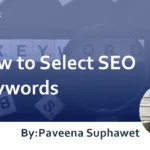SEO Strategies for Small and Medium-sized Enterprises (SMEs) An Explanation of SEO for Various Company Websites
contents
- 1 What SEO Actions Can Small and Medium-sized Enterprises Take? Exploring the Importance and Methods of Increasing Web Traffic
- 2 Types of Websites Operated by Small and Medium-sized Enterprises
- 3 SEO Strategy Flow for Small and Medium-sized Enterprises
- 4 SEO Techniques for Small and Medium-sized Enterprises
- 5 FAQs on SEO for Businesses
- 6 Summary
What SEO Actions Can Small and Medium-sized Enterprises Take? Exploring the Importance and Methods of Increasing Web Traffic
For profit-seeking businesses, attracting customers is crucial to offer products and services. Among the means to attract customers are various promotional activities, including advertising.
In today’s society, web-based promotional activities are indispensable. Particularly, SEO (Search Engine Optimization) is highly cost-effective in attracting customers.
This section provides SEO strategies for small and medium-sized enterprises, explaining the advantages of SEO for companies, how to approach SEO for different types of sites, and a clear summary of specific SEO strategies and tips from Tokyo SEO Maker, an SEO specialist media.
SEO for Small and Medium-sized Enterprises
For SMEs, attracting customers to increase sales of products and services is essential, with SEO being one of the key strategies.
The effect of SEO is to increase the visibility of a company’s website or product site, thereby increasing web traffic.
What is SEO?
SEO refers to the strategy of getting a company’s website to appear at the top of search engine results. Specifically, it targets the most widely used search engine, Google. For more details on SEO, refer to the separate article ” What is SEO .”
Why SMEs Should Implement SEO
Small and medium-sized enterprises can increase their website traffic by implementing SEO strategies. Typically, the purpose of operating a website for a business is to pursue profit. Specific advantages for a company implementing SEO include;
- Increasing awareness of its products or services
- Generating advertising revenue from the company’s site
- Boosting sales of products or services
- Enhancing the company’s branding
Enhancing Awareness of Products and Services
By creating a brand website for products or services, businesses can make detailed information known to search users.
Further, implementing SEO strategies can increase the site’s traffic, spreading detailed product information to a wider audience. As product awareness grows, so does the potential customer base, which can lead to increased sales.
Advertising Revenue from Owned Websites
Operating owned media allows for generating advertising revenue based on site traffic by incorporating ad spaces within the site.
Owned media, in its narrow sense, refers to media that disseminate information on specific topics. Depending on the theme, it can attract significant traffic and is highly compatible with SEO and web advertising businesses.
Selling Products and Services
Setting up an e-commerce (EC) site with payment capabilities allows for operation as an online shop, thus expanding the channels for selling products and services.
For instance, if your company is in the distribution business, you can have both physical stores and an EC site as sales channels. For manufacturers, beyond general distribution, there’s the possibility of selling products directly online.
In either case, advancing SEO strategies will increase traffic to the EC site, creating more opportunities for product and potential customer interactions.
Branding of the Company
Operating a website as a small or medium-sized enterprise enhances the recognition of the company and its products, contributing to branding efforts. Detailed strategies for successful branding through owned media are discussed in the following article
Explaining Key Points and Steps to Successful Branding with Owned Media
Types of Websites Operated by Small and Medium-sized Enterprises
Websites can be classified into various types based on their operational purpose and characteristics. The typical types of websites operated by businesses include;
- Corporate websites
- Product-specific websites
- Owned media
- E-commerce (EC) sites
- Portal sites (comprehensive/search-based)
- Social Networking Services (SNS)
Operating large-scale sites like portal sites and SNS requires substantial budgets, usually feasible only for large corporations. However, for small and medium-sized enterprises, the following three types of media are more manageable, each with effective SEO strategies.
- SEO for corporate websites
- SEO for product-specific websites
- SEO for owned media
SEO Strategies for Small and Medium-sized Enterprise Websites
Small and medium-sized enterprise (SME) sites, also known as corporate websites, introduce the company’s basic information. Typically, the structure of such sites includes
- Home page
- Product/Service introduction page
- Press release/News page
- Company profile page
- Job information page
- Contact page
SEO strategies for corporate websites may involve;
- Publishing executive profiles
- Registering with Google Business Profile
- Establishing reciprocal links with product sites
- Creating mutual links with related businesses
- Negotiating for coverage and backlinks
SEO Strategies for Product Sites
Product or service sites, often referred to as brand sites, provide detailed information about the company’s offerings.
These sites usually focus on featuring the main products or services and are designed to enhance the product image, often adopting a design that reflects the product’s branding.
Product sites typically comprise;
- Home page
- Product/Service introduction page
- Campaign page
- Column articles page
SEO strategies for product sites include;
- Creating column articles utilizing industry knowledge
- Planning campaigns integrated with social media
- Setting up reciprocal links with sister product sites
- Establishing mutual links with related businesses
- Handling media inquiries and negotiating for backlink acquisition
SEO Strategies for Owned Media
Owned media, broadly, refers to media owned by the company. In a narrow sense, it can mean an informational site separate from the corporate site, often focusing on specific themes.
In the latter case, the site’s structure significantly varies based on the chosen theme. Therefore, it’s essential to carefully select the theme and target audience, picking keywords that meet the visitors’ needs.
For more detailed guidance on targeting and keyword setting for informational sites, refer to the following article.
What Are the Specific Steps for Writing in Owned Media? Including Key Points
Key points for SEO including owned media
- Pursuing search intent and creating articles accordingly
- Covering related information comprehensively
- Soliciting and writing articles based on interviews
- Negotiating for backlinks to product introduction articles
SEO Strategy Flow for Small and Medium-sized Enterprises
There are various types of websites operated by small and medium-sized enterprises. Particularly for corporate sites, the general flow of SEO strategy is as follows.
- Setting keywords for the corporate site
- Creating information pages for the company
- Revising page information
- Registering office details in Google Business Profile
- Setting Keywords for the Corporate Site
Initially, determine the keywords for the corporate site, envisioning what keywords search users might use and their intent. For instance, if your company manufactures and sells instant noodles, potential keywords could include
- Cup noodles
- Instant Ramen
- (Product or brand name)
Based on these keywords, imagine the site structure. A corporate site typically includes
- Home page
- Product/Service introduction page
- Press release/Announcements page
- Company profile page
- Job information page
- Contact page
If you have yet to launch your corporate site, refer to the following article to proceed with the site-building process.
How to Create a Website? Explaining Clearly for Beginners
- Creating the Company’s Information Pages
Based on the set keywords and site structure, proceed to create the pages. It’s crucial for a corporate site to publish accurate information, so thorough review and editing are necessary. Ideally, have proofreading experts check the pages or establish a review process within the company to ensure accuracy.
Publishing incorrect information can negatively impact SEO and potentially harm the company’s credibility.
- Revising Page Information
Once the site is initially completed, it enters the operational phase. Corporate sites rarely need frequent updates, but additions or modifications may be required in cases like;
- Changes in management
- Renewals or price changes in products/services
- Distribution of press releases or announcements
- New recruitment activities
Such website modifications are referred to as rewriting. For detailed guidance on rewriting processes, refer to the following article.
How to Rewrite Content
Registering Office Information in Google Business Profile.
After launching your corporate website, register your company information on Google Business Profile . Google Business Profile is a service that compiles business or store information to display on Google search results pages and Google Maps.
For businesses, a significant advantage is having their basic information appear in search results and on maps. Specifically, your company information will be displayed as shown in the following image.
Moreover, the information about your company that appears in search results and on maps includes;
- Link to the corporate website
- Company name
- Reviews
- Location
- Business hours
- Phone number
SEO Techniques for Small and Medium-sized Enterprises
For SEO strategies on small and medium-sized enterprise websites, consider techniques like;
- Publishing the management team’s profiles
- Displaying customer testimonials
- Creating blogs or column articles
- Proactively responding to media interviews
Publishing the Management Team’s Profiles
Publishing profiles of the management team can have positive SEO effects.
Google search engine incorporates various rules, with a complex interplay for determining search results. Within these rules is the concept of EEAT , one of the search engine’s evaluation criteria.
Source: General Guidelines
-Experience
-Expertise
-Authoritativeness
-Trustworthiness
As these elements suggest, search engines look for reliability and expertise in websites. Typically, companies possess these qualities. To support EEAT, detailed information about the management can enhance the website’s evaluation by search engines. Specifically, introduce the management team’s background and achievements on the company overview and executive greeting pages of the corporate website.
Publishing Customer Testimonials
Displaying third-party opinions or objective achievements can enhance the credibility of your products or services. This can be done by
- Posting customer testimonials
- Showcasing company achievements
Customer testimonials are especially effective for services with high demand for reviews, such as legal consultations or massage services. To collect customer voices, simple surveys can be implemented. On the other hand, posting company achievements is a strategy well-suited for B2B businesses.
Creating Blogs or Columns
Producing columns or blog articles utilizing industry knowledge can be advantageous for SEO.
In SEO, there are three types of keywords.
- Primary keywords
- Middle keywords
- Small keywords
Among these, “small keywords” refer to keywords that are searched less frequently. The method of mass-producing web pages centered around small keywords to attract visitors is called long-tail SEO. For example, a manufacturer of instant noodles, with extensive knowledge about cup noodles and packet noodles, would leverage this knowledge to create articles on topics like “suggestions for eating cup noodles”. In doing so, the aim would be to achieve high rankings in search results for keywords related to this subject.
- Cup noodles with mayonnaise
- Adding extra spices to cup noodles
- Adding garlic to miso ramen
By capturing multiple long-tail keywords, search engines and users will recognize your site as knowledgeable about instant noodles, improving your rankings for broader terms like “cup noodles.”
Being Proactive in Media Engagements
Responding to external media inquiries can also lead to SEO benefits. A common example is having web articles published about your products or services.
Search engines have mechanisms where your site gains SEO benefits when mentioned or cited on external websites. These mentions are referred to as backlinks and citations .
A backlink is a link received from an external site, which search engines regard as “valuable information,” thus providing SEO benefits. Citations, although not involving direct links, can still offer some SEO value.
Both backlinks and citations are advantageous for SEO, so engaging with high-quality media outlets is crucial.
FAQs on SEO for Businesses
Here are some common questions about SEO for businesses, compiled in an FAQ format.
Q: Should our company do SEO?
A: If you have clear goals, implementing SEO is advisable.
Benefits of SEO include
- Increased awareness of products/services
- Advertising revenue based on site traffic
- Accumulation of customer data
- Branding for the company and products
SEO can offer high cost-effectiveness among various promotional activities, so it’s generally recommended when aiming to boost product sales.
Q: What industries need SEO?
A: Virtually all industries can benefit from SEO.
With the widespread use of search engines for information gathering online, companies in any industry can achieve results through SEO.
Industries with high-value products or services, like real estate or finance, can particularly benefit from and are well-suited for SEO.
Q: When should we consider outsourcing SEO?
A: Look for an SEO agency that aligns well with your company.
When outsourcing SEO, choose an agency familiar with your industry. For guidance on finding an SEO company, refer to our separate article .
Summary
When businesses implement SEO strategies, they can increase web traffic and enjoy various benefits. However, there are different types of websites, each requiring specific operational strategies. It’s crucial to understand the characteristics of the website you are operating and clearly define its objectives. Then, select the SEO strategies that best suit your company’s site.











![What is a Description? Explaining the Meaning, Writing Style, and Changing Word Count – [2023 Edition]](https://www.switchitmaker2.com/en/wp-content/uploads/2024/09/what-is-description.webp)










